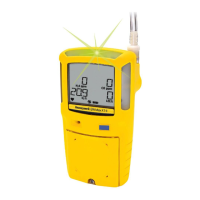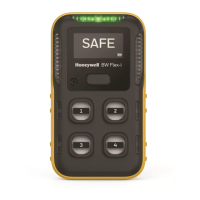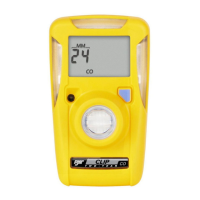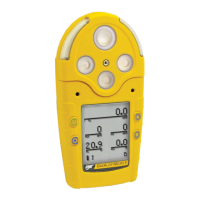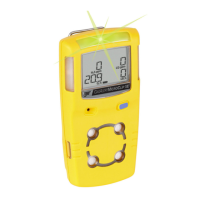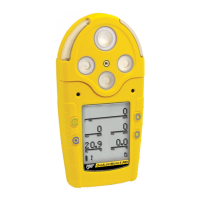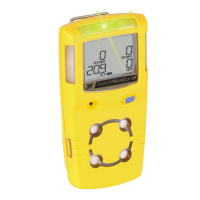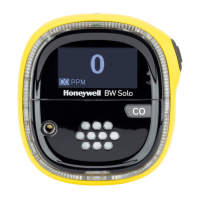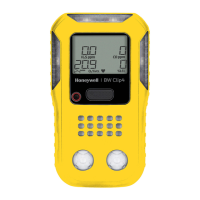CAUTION
Use the detector only as specified in this manual, otherwise the protection provided
by the detector may be impaired.
l
Only the instrument capable of sounding the alarms and showing readings on a
display should be used for immediate safety critical use. Wireless communication
and infrastructure are only for informational monitoring.
l
Use only Honeywell approved batteries (order number: HU-BAT (P/N: 50122982-
130) with the Honeywell BW™ Ultra detector. Using any other battery can cause an
explosion or fire.
l
The lithium battery in this product presents a risk of fire, explosion, and chemical
burn if misused. Do not open, crush, disassemble, incinerate, or heat above 100°C
(212°F). Batteries exposed to heat at 130°C (266°F) for 10 minutes can cause fire
and explosion. Follow the manufacturer’s instruction. Batteries must only be
charged and/or replaced in a hazardous free area.
l
Deactivating the detector by removing the battery pack may cause improper
operation and harm the detector.
l
Use only Honeywell approved battery charger, that is certified for SELV/LVLC
(isolated) with an output Um of 6.3 V.
l
If using the detector near its upper or lower operating temperature, Honeywell
recommends zeroing or activating the detector in that environment.
l
Charge the detector before first-time use. Honeywell recommends the detector
also be charged after every workday.
l
Calibrate the device on a regular schedule, depending on use and sensor exposure
to poisons and contaminants. Honeywell recommends calibrating at least once
every six months.
l
For optimal performance, periodically zero the sensor in a normal atmosphere
(20.9% v/v O2) that is free of hazardous gas.
l
The combustible sensor is factory calibrated to 50% LEL methane. If monitoring a
different combustible gas in the % LEL range, calibrate the sensor using the
appropriate gas.
l
Only the combustible gas detection portion of this detector has been assessed for
performance by CSA standard.
l
Honeywell recommends that the combustible sensor is checked with a known
concentration of calibration gas after any exposure to contaminants/poisons such
as sulfur compounds, silicone vapors, halogenated compounds, etc.
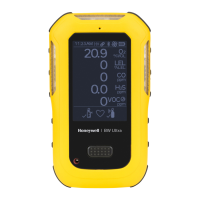
